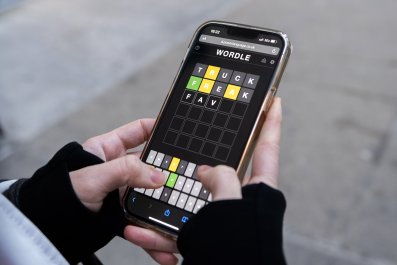In 1961, Gabriel García Márquez was at a dead end. He had a drawer full of unpublished novels and little faith in any of them. “I had driven myself up a blind alley, and I was looking everywhere for an escape route”.
Then a friend, the Colombian poet Alvaro Mutis, handed him a small book by an author Márquez had never encountered: Pedro Páramo by Juan Rulfo. First published in 1955, it begins with a man named Juan Preciado making a journey to fulfil his mother’s dying wish. He must travel to a town he’s never visited, to confront his father, Pedro Páramo, a man he’s never met. He will not leave the town alive.
“That night I couldn’t sleep until I had read it twice,” Márquez recalled in a foreword to Rulfo’s novel. “The rest of that year I couldn’t read a single other author, because they all seemed inferior.” He re-read the book until “I could recite the entire book front to back and vice versa”. It was the electrical shock he needed. If it weren’t for Pedro Páramo, Márquez often said, he could never have written his masterpiece One Hundred Years of Solitude.
Countless novelists have similar stories about Rulfo’s brief, haunting book. Ask around in Mexico City, and there’s a rough divide between those who consider it Mexico’s greatest novel, and those who’ll argue it’s the greatest in all of Latin American literature. To Argentina’s most fêted author, Jorge Luis Borges, it was simply one of the greatest books in any language.
Michael Schmidt, the Mexico-born author of The Novel: A Biography, tells me he met Rulfo in 1965 to discuss translating his work into English. “I was frightened of him. He was very quiet. Usually, people have social graces which put you at your ease.” Rulfo did not. “I don’t think he was that interested in being adulated.”
The planned translation came to nothing, which spared Schmidt a tricky job. “Rulfo’s prose is seemingly simple but incredibly complex to translate.” He used words as sparingly on the page as he did in conversation. “If Mexico had a Kafka it would be Rulfo, he can be as spare as that.” After Pedro Páramo, 30 years of silence followed before Rulfo published his second (and final) novel, The Golden Cockerel.
In Márquez’s words, “contrary to what happens with most great authors, [Rulfo] is a writer who is much read but little spoken of.” Mention his name in Britain and you’re likely to be met with a blank look. But that is about to change. A new translation has been met with ecstatic reviews, a Netflix film is in the works from Rodrigo Prieto (the Oscar-nominated cinematographer of Brokeback Mountain and The Wolf of Wall Street), and this week a new stage version, Comala Comala, comes to the UK from Mexico City.
A straightforward adaptation was “out of the question”, says Alonso Teruel, artistic director of the theatre company behind the new stage show, Pulpo. Though Pedro Páramo is “taught at every high school,” he says, it’s a slippery, ambiguous text. “You have the answer before you have the question.” The narrative skips back and forward in time; it’s often unclear which characters are alive or dead, which voices are real or imagined. Agreeing on chronology involved Pulpo’s team putting “crazy maps up on a board”, and “days of discussions, which turned into fights, because people understood things differently”. Still, Teruel insists that the book is “not difficult, it’s just that you have to give in. You can’t put up a fight with it.”
The mood matters more than the plot, and Comala, Comala captures that mood brilliantly through its use of music. Teruel is reluctant to call it a “musical”, because of the word’s jazz-hands connotations. Indeed, the first couple of composers he approached were rejected for following “the traditional American musical sounds, just singing in Spanish.” They ultimately hired songwriter Pablo Chemor, whose music – deeply influenced by traditional Mexican folk – creates an intimate, gig-like atmosphere; the candle-lit show could almost be an impromptu jam in one of the city’s sawdust-floored pulquerias. (To add to the dive-bar ambience, free mezcal is handed out to the front row.)
Almost 30 instruments are played by the eight-strong cast, including a traditional percussion instrument, the quijada. These are harder to track down than you might think. “The one we’ve been using for the past couple of years in the show has had some wear and tear. And so we were looking for a second instrument, and we literally had to wait for a donkey to die of natural causes for us to get a second jawbone.”
Comala, Comala – which opens at the Edinburgh Fringe on Friday – takes its title from Pedro’s hometown, which is in a sense the novel’s real protagonist. The book begins “in the dog days of August”; the heat is terrible, but a stranger Juan meets on the road warns him that he’s in for worse when he reaches Comala. “That place sits on the burning embers of the earth, at the very mouth of Hell. They say many of those who die there and go to Hell come back to fetch their blankets.”
This is not just a joke. As Juan will learn, Comala is a ghost town in every sense. Squeezed dry by Pedro’s rapacious cruelty, it’s a place where the line between life and death is blurred, and damned spirits haunt the streets. The novel is, for the most part, a series of ghostly vignettes about its many townsfolk.
“All these characters are so true to the Mexican experience,” says Teruel. “You’ve been to a million Comalas before.” Like the Day of the Dead festival, the novel captures what Teruel calls “Mexico’s irreverent relationship with the nature of death”. About 50 pages in – spoiler! – Juan Preciado drops dead in the street, and spends the rest of the novel eavesdropping on ghosts from six feet underground, but doesn’t really seem to mind.
The resurgence in the book’s popularity ties into a generational resurgence of interest in traditional Mexican culture. Teruel says that, when he was growing up, “there was dismay for the Mexican identity – everything from the outside was better. “We like Hallowe’en, we don’t like Day of the Dead.’ The pendulum has now swung the other way. People are moving back out of the city into the rural areas, to encounter more of that Mexican identity that we so rejected early in our lives. And so it’s an interesting shift.” Comala may not be a ghost town forever.
Comala, Comala is at Zoo Southside, Edinburgh, Aug 2-25; edfringe.com
Disclaimer: The copyright of this article belongs to the original author. Reposting this article is solely for the purpose of information dissemination and does not constitute any investment advice. If there is any infringement, please contact us immediately. We will make corrections or deletions as necessary. Thank you.




